Top 10 Porsches of All Time
You know the badge. You know the reputation. Here are our picks for the Top 10 Porsches of All Time.
The Porsche of Cars
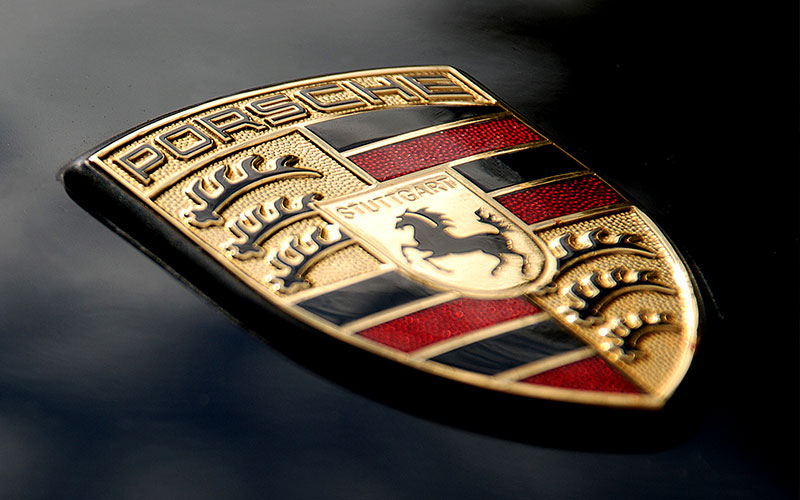
Ze Germans have a knack for making sporty luxury cars. BMW and Mercedes-Benz happen to have made some truly great ones over the years, with legends like the M3 and SL under their respective belts. But neither badge is quite as famous or highly revered both inside the car world and out as Porsche. The 911, with its nearly 60 years of steady, incremental improvement, is inarguably their most well-known and well-regarded nameplate, but the Porsche badge has graced many other great cars as well.
Below, we trace the company’s history, from sporty roadsters to racing legends to insane supercars, for this list of the top 10 Porsches of all time.
Porsche 356
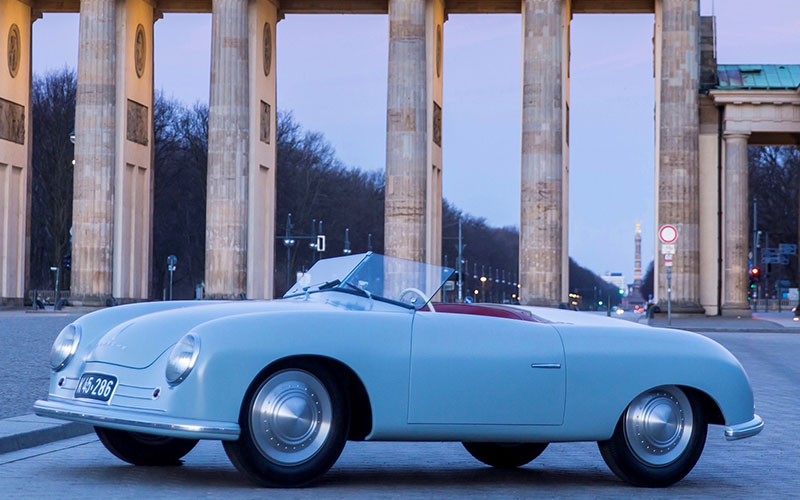
The car that started it all, the Porsche 356 arrived in the wake of WWII. Ferry Porsche took the simplicity of the Volkswagen Beetle (designed by his father Prof. Ferdinand Porsche) and gave it a sporty twist. The Porsche 356 would take the same basic rear-engine, rear-wheel drive design, along with the same air-cooled flat-four engine to create a new automotive icon. The first 50 Porsche 356s were assembled in Gmund, Austria in 1948 and 1949, prior to the company’s return to Stuttgart, Germany in 1950. These early cars are also notable for being aluminum bodied while all later cars featured a steel construction. Like the Porsches that followed, the 356 saw steady, incremental improvements over the years, gaining larger engines (from the original 1.1L all the way to a full 2.0L). The 356 had great longevity for the company, staying in production until 1965. The final ten examples were sold in 1966 to the Dutch police force.
Porsche 928
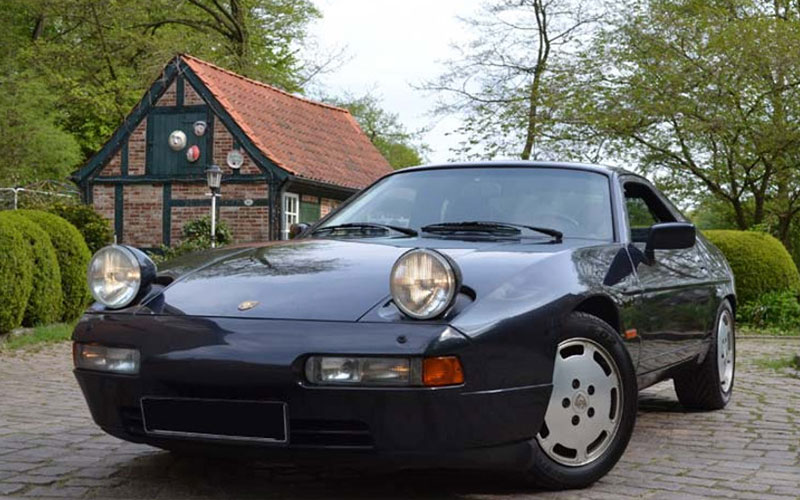
Debuting at the Geneva Motor Show in 1977, the Porsche 928 seemed to run counter to all that had come to define a Porsche starting with its front mounted, water-cooled V8. Indeed, the 928 was a significant departure, but that was the point. At the time, Porsche executives believed their flagship 911 had been refined to its utmost, having taken its rear-engine, flat-six design to its limits. The 928 was Porsche’s first clean-sheet design. Not only did it have a new layout and engine it also featured a transaxle design, near perfect 50/50 weight distribution, and a then new Weissach axle in the rear. These made the 928 an exceptional handling car as well as exceedingly comfortable on the road. (It also featured a sick pair of uniquely styled pop-up headlights.) The car quickly gained converts despite its flouting of tradition, even winning the European Car of the Year in 1978. Porsche would produce the 928 all the way to 1995, when it was succeeded by the Boxster.
Boxster/Cayman
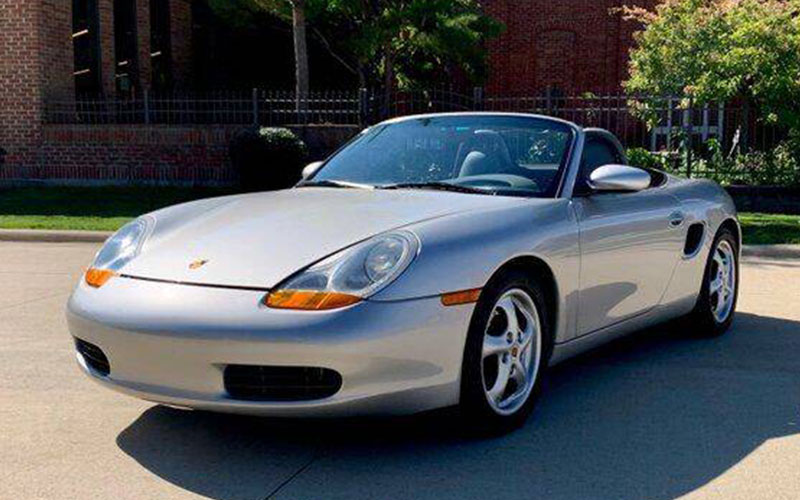
Arriving in 1996, the Porsche Boxster tweaks the classic 911 formula by moving the engine to mid-ship, echoing the Porsche 550 Spyder of the 1950s. The Boxster was designed and developed alongside the next generation 911, the 996. As a result, the two cars shared a lot in common. First was the new water-cooled flat-six engines (the Boxster getting less displacement to not overshadow its big brother 911). Inside and out, the two cars featured many of the same components, including their “runny-egg” headlights, much to the chagrin of 911 buyers who felt the visual similarities cheapened their 996’s.
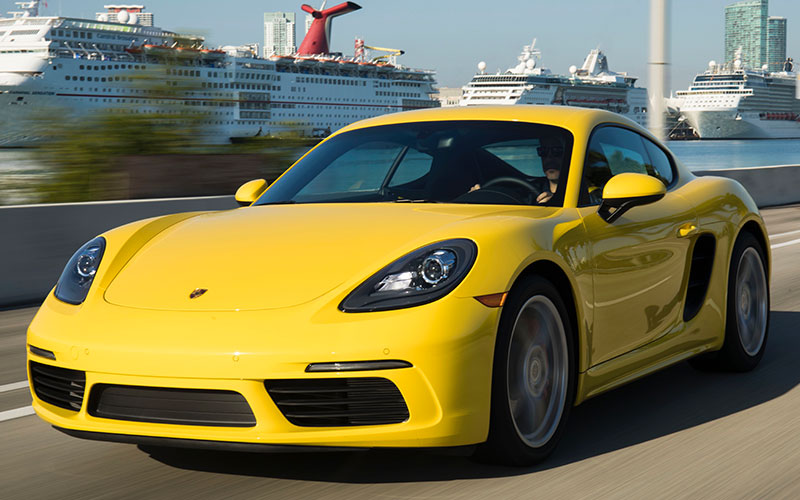
The Boxster was joined by a coupe version, the Cayman, in 2005 (for the 2006 model year). Both versions benefitted from their mid-engine layout and offered impressive handling. For the 2017 model year, Porsche added 718 to the Boxster/Cayman’s nameplate, a reference to the Porsche 718 RSK racecar of the 1950s. The current fourth generation of Boxster is its most impressive. Though the engines are now smaller turbocharged flat fours, the Boxster/Cayman’s 2.0L and 2.5L engines are still very powerful (around 4 seconds to 60mph) and the cars handle just about as well as any 911 Porsche makes. In our estimation, the little brother Boxster has stepped out of the 911’s shadow and proven the “budget Porsche” is nothing less than awesome.
Porsche 959
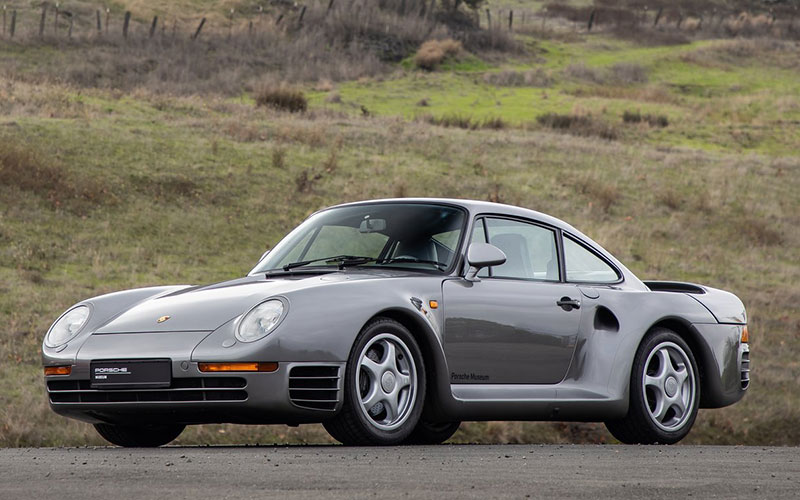
The first Porsche supercar, the 959 began as a Group B project with the hope of testing the latest in Porsche engineering on the rally circuit before deploying it in the venerable 911. In true Porsche form, the 959 had a long incubation period as developers and engineers tinkered. By the time the car was ready, in 1986/87, Group B had already been canceled. Despite this, the car was so undeniably impressive and ahead of its time, Porsche allowed it to go to production. Though the 959 missed Group B, it made it to the Paris to Dakar Rally, taking 1st, 2nd, and 6th in the race’s second year and cementing its place as a rally legend.
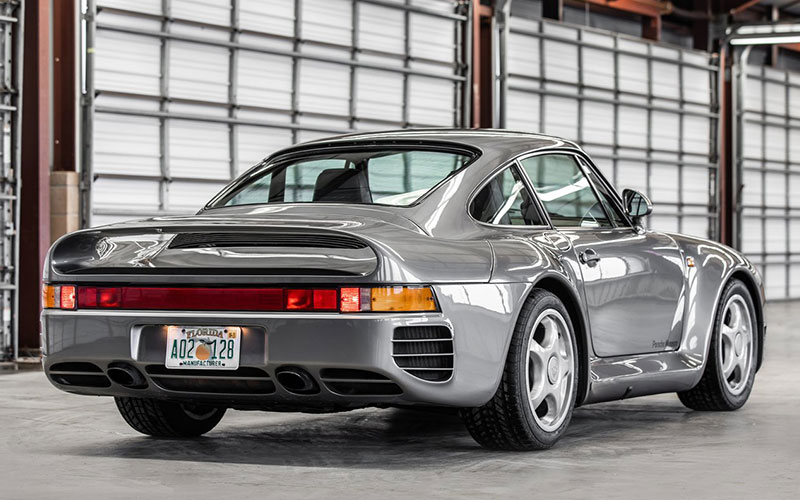
The 959 was a grab bag of cutting-edge automotive technology. There’s the light-weight Kevlar and aluminum body. And then there was the new computer modulated variable torque all-wheel drive system, the first Porsche to deviate form rear-wheel drive. The 959 was powered by a 2.8L twin-turbo flat-six making 444 horsepower and 369 lb.-ft. of torque. The twin turbochargers were sequential, giving the 959 boost through a greater rev range.
The 959 sold for $225,000 retail but cost nearly twice as much to build. Add to that fact, that US importations were nearly impossible given that Porsche had declined to submit the four examples necessary for crash testing. It would take over a decade of wrangling by collectors to get the 959 approved for US roads under a “show and display” provision.
Porsche Carrera GT
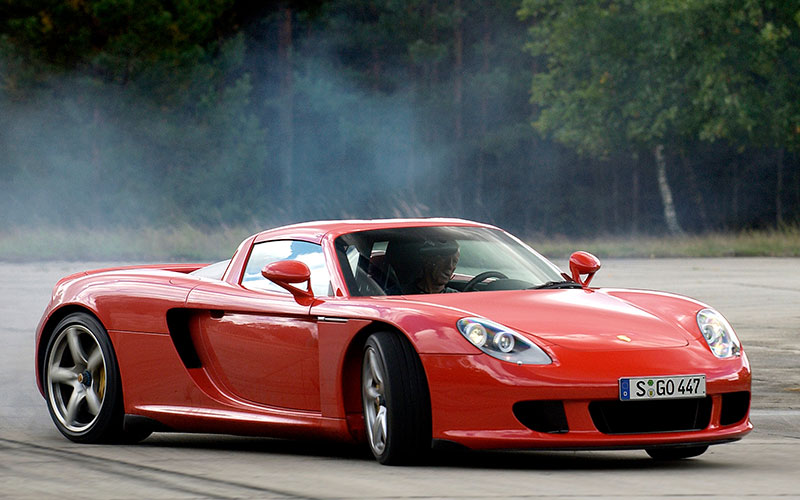
While Porsches are famous for their signature boxer engine rumble, the Porsche Carrera GT gets the crown for best sounding Porsche ever thanks to its 5.7L naturally aspirated V10. The mid-mounted engine redlines at 8,400 rpm lets off a whine reminiscent of F1 cars. That’s no conscience either, since the V10 had originally been designed for F1 and then later in development for an aborted run at Le Mans. The V10’s final destination was the Carrera GT, Porsches second “supercar” debuting in 2003. The V10 boasted 603 horsepower and 435 lb.-ft. and powered the Carrera GT from 0-60 in 3.5 seconds and a top speed of 205 mph.
Fittingly, the Carrera GT had plenty of innovations and impressive features, including a new carbon fiber monocoque chassis and an ultra-light twin-plate dry clutch (the first such clutch to be used in a production car). Then there were the huge ceramic brakes for massive stopping power and the push rod coil-overs for an exceptionally smooth ride. The Porsche Carrera GT impressed in the early aughts and still does so today.
Porsche 918 Spyder
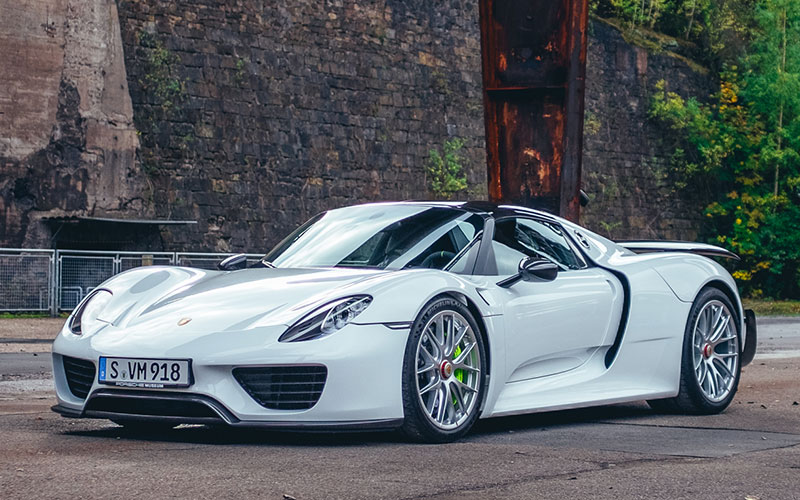
The third of Porsche’s super cars, the 918 Spyder graduated to the next level, hypercar. What made the 918 so exceptional was the plug-in hybrid drivetrain. When I say, plugin hybrid, many will think of commuter cars designed for maximizing fuel economy, not driver excitement, but the 918 started the trend in modern supercars of leveraging an electric motor’s instant torque to achieve insane levels of acceleration.
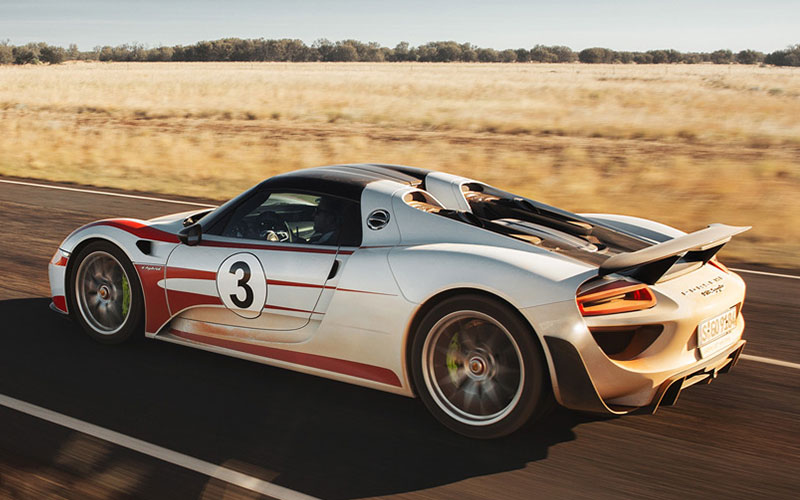
The 918 featured a naturally-aspirated 4.6L V8 paired with two electric motors for a combined output of 875 horsepower and 944 lb.-ft. of torque (along with 12 miles of all-electric driving range). This drivetrain allowed the 918 to rocket from 0 to 60 in just 2.6 seconds (though unofficial, Car and Driver got 2.2 seconds while Motortrend got 2.4) and achieve a quarter mile time of 9.8 seconds.
With just 918 built in its short run from 2013 through 2015, the Porsche 918 Spyder is a highly desirable supercar commanding a premium of between $1 and $2 million on the secondary market today.
Porsche 917
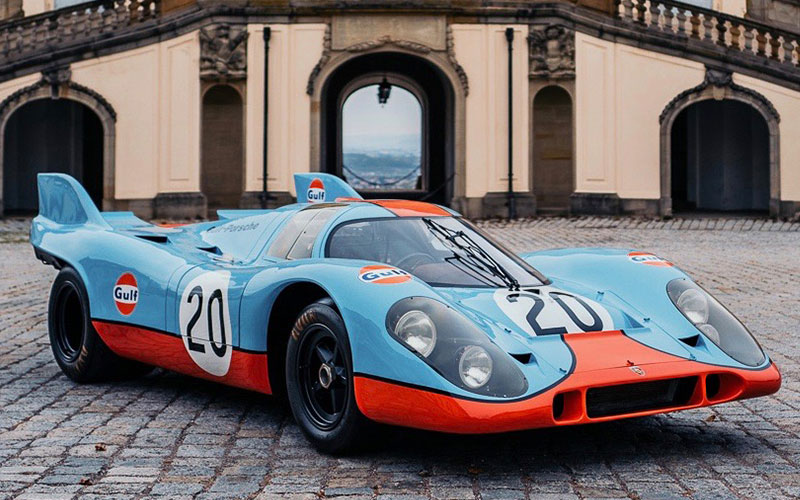
Among Porsche’s many storied racecars, none is more instantly recognized than the 917. This owing to the 917’s combination of longevity and success; the car just kept winning. Designed with lightness in mind, the 917’s spaceframe chassis weighed just 93 lbs. Its engine, a 4.5L flat-12, was the resulting marriage of two smaller 2.25L flat-sixes. Three sizes of the engine were used during the 917’s competitive run, a 4.5L, 4.9L, and a 5.0L. Its top test track speed was a blistering 225 mph.
First fielded at the 24 Hours of Le Mans in 1969, the car’s aerodynamics made it dangerously unstable at high speeds. In the days before wind-tunnels were in widespread use, engineers noted where gnats were splattered on the car’s body to track how air was moving over the car. With aerodynamics refined, the 917 could realize its potential, winning at Le Mans in 1970 and ’71 (with 1970 being Porsche’s first in at Le Mans). It was the 917 that Steve McQueen drove in his Le Mans film.
Porsche 956/962
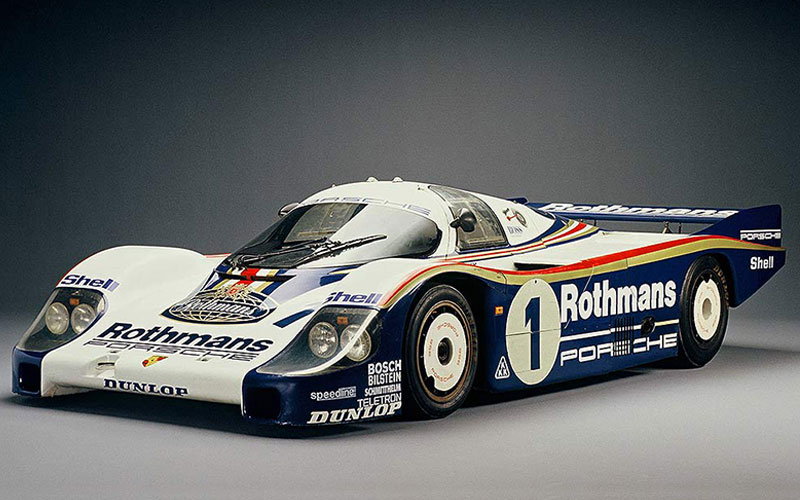
Though the 917 might be more recognizable, the Porsche 956/962 is the more successful and, as Jalopnik dubbed it, perhaps the greatest racecar ever built. The car’s 2.65L twin-turbo air-cooled flat-six made on the order of 635 horsepower (though sources vary on this). The 917 also had Porsche’s first used of a monocoque chassis design.
In addition to numerous wins over the course of its run (including two Le Mans wins), the 956 is best remembered for its Nürburgring record of 6:11.13, which was set in 1983 and stood for 35 years until it was finally surpassed by another Porsche, the hybrid EVO racecar, with an insane time of 5:19.55.
Porsche Taycan
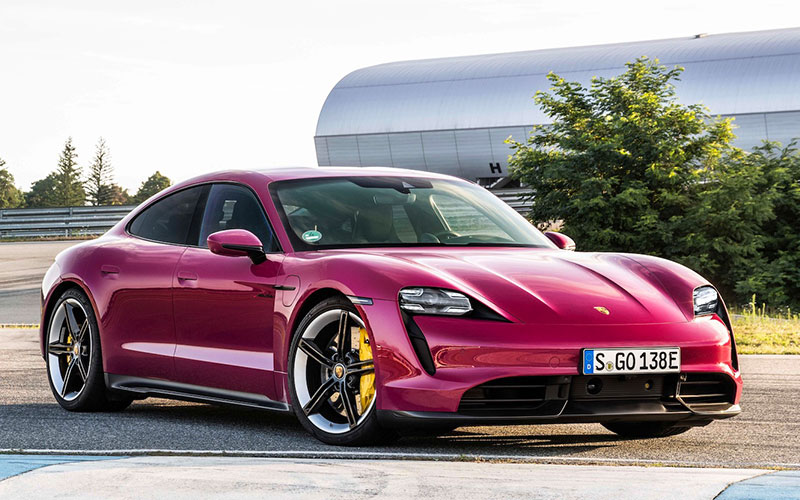
The Porsche Taycan is the brand’s first fully electric vehicle, and it takes every performance advantage that instant electric torque can provide for neck-snapping levels of acceleration. And yet, the four-door sedan concedes nothing in terms of handling. Unlike its direct competitor, the Tesla Model S, the Taycan prioritizes handling as much as it does straight-line speed. In other words, it’s a spaceship that drives like a proper Porsche.
At its most powerful, the Porsche Taycan Turbo S (yes, Porsche still calls an electric car a “turbo”) makes 751 horsepower and 774 lb.-ft. of torque and sprints from 0 to 60 in 2.6 seconds. Unlike most electric vehicles, the Taycan features a two-speed automatic transmission. The change in gearing allows the Taycan to maximize output at low and high speeds. The Taycan also boast the lowest drag of any Porsche, with a coefficient of just .22. The Taycan heralds a new age of electric power for the Porsche brand. That their first crack at bat was out of the park bodes well for the future of the brand.
Porsche 911
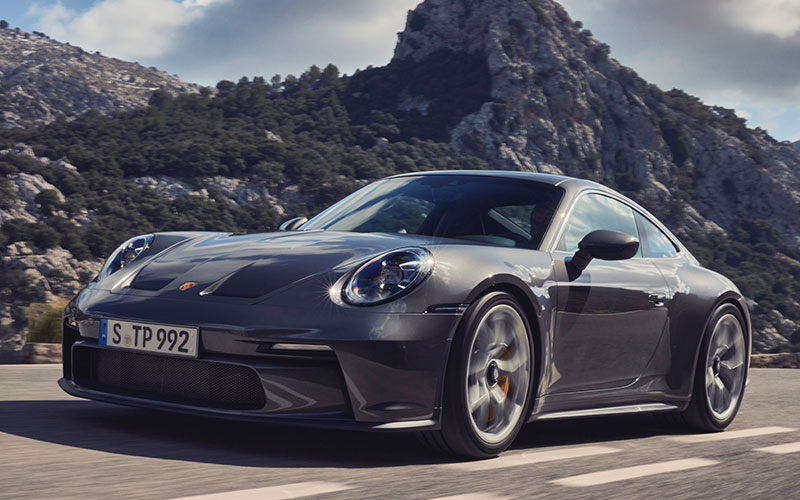
If ever a car defined a brand, it’s the Porsche 911. Beginning in 1963 and still in production today, the legacy of the 911 is cemented as one of the most significant cars ever made. The successor to the Porsche 356, the 911 defined the Porsche design of rear-engine, air-cooled, rear-wheel drive sports cars with a new chassis and a new engine. This formula, with minor tweaks, has carried the 911 through decades of steady improvement, keeping it at the cutting edge and a perennial sports car all-star.
Nowhere is the Porsche ethos of continual improvement more at play than in the 911, with the engines growing in displacement and new tech and new tweaks along the way. Indeed, there are so many significant 911 variants that they should have their own article. So here are just a few highlights.
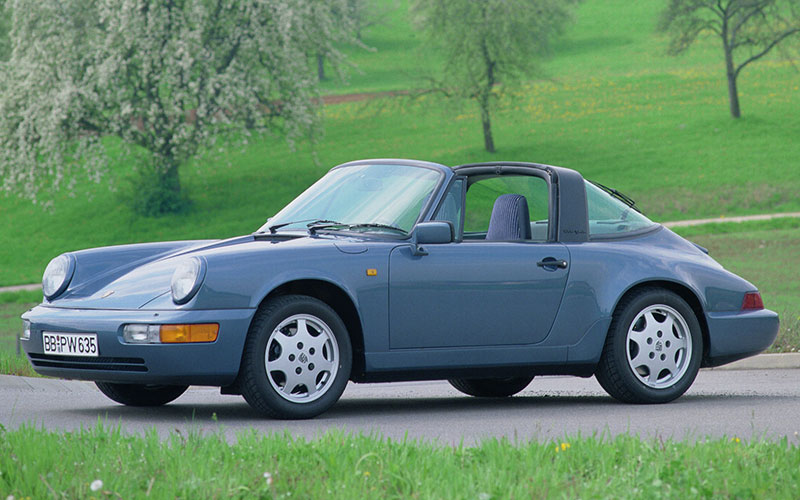
The first major addition was the Targa top in 1967, a stop-gap design to ensure 911 buyers could still enjoy open air driving despite safety regulations. The regulations never came to fruition, but the Targa became a widely implemented design across the industry to this day. In a significant departure, the aforementioned 996 generation 911 of the 1990s, departed from decades of air-cooled engines to water-cooling. The GT variants mixed and matched racing components for a more track focused 911. Today’s 992 generation is the fastest, tightest, most capable 911 yet with the current 911 Turbo S jetting from 0-60 in 2.2 seconds. That’s supercar fast with daily drivability. But then, it’s the 911, the greatest Porsche of them all.


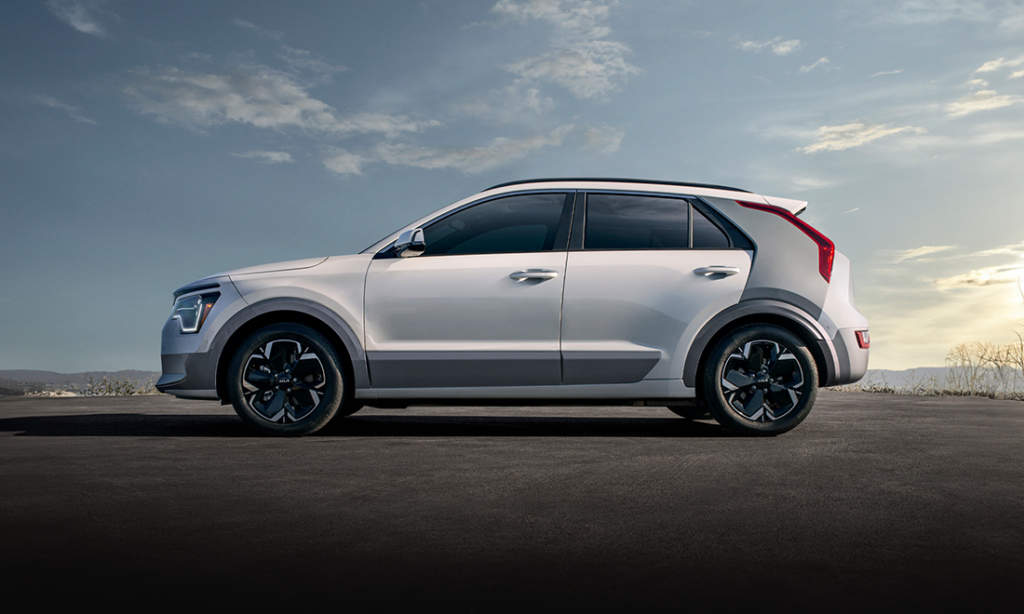
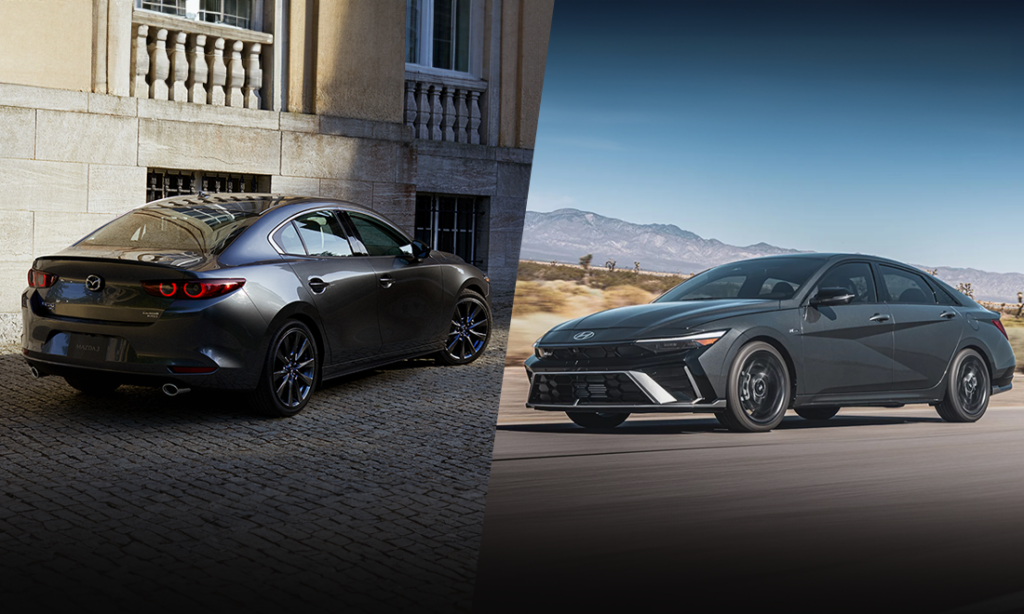
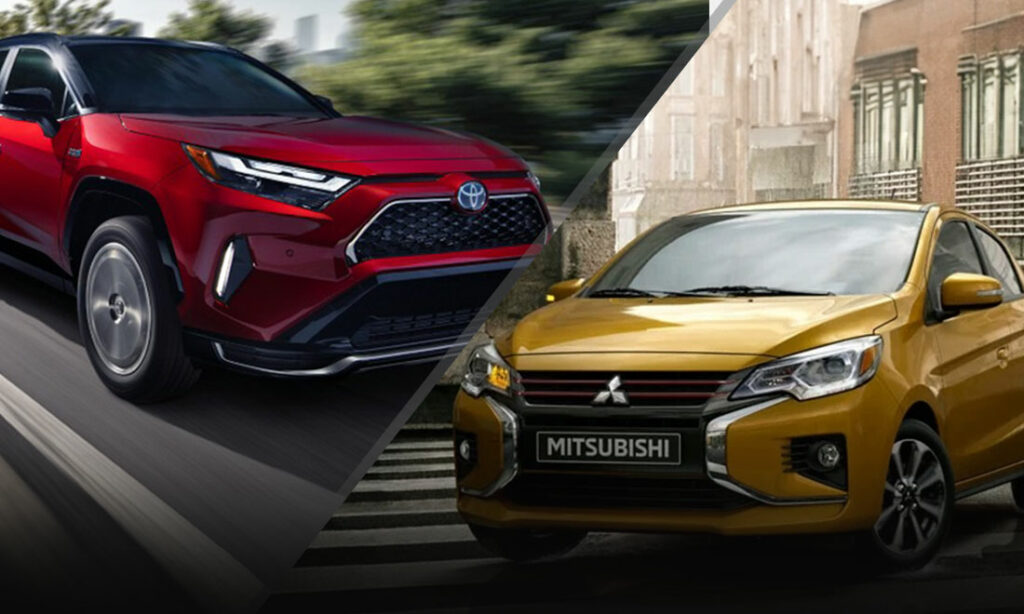



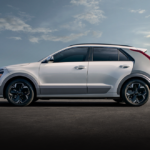






Loved my 356b…